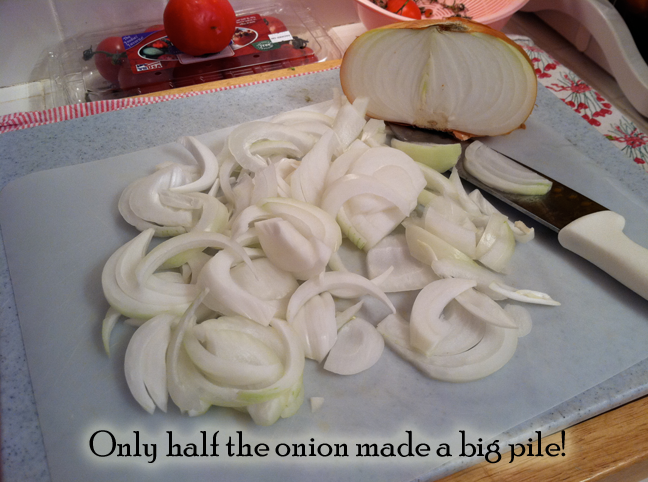I don't do well growing tomatoes from seed so when it comes time to put some in I go to our local nursery and buy a couple of cell packs of tomato seedlings with 6 plants in each. This year I bought a cell pack of roma tomatoes and a cell pack of cherry tomatoes.
I then conducted my own not-so-scientific experiment.
I planted one each of the plants in clay pots on our deck with morning shade and full afternoon sun in super-fancy-schmancy Miracle-Gro soil that's supposed to produce outstanding veggies. Flanked by separate pots of chives, Italian parsley and basil I expected these plants to do very well with the full sun all afternoon to sunset and the influence of the herbs around them.
I planted a couple more plants down in the ground off the edge of our deck with the same exposure as the pots. I built up a funky little planter around them from scrap concrete blocks (a former mow strip) and put some of the Miracle-Gro soil on top. A week or so later I mulched with some donated rabbit droppings and alfalfa as well as chipped branches from our own yard. I anticipated the green growth might bolt because of the added nitrogen from the mulch but figured it would be a good part of the experiment anyway.
I planted two of the plants in the front garden where mostly roses grow. I have a 4x8 foot planter box in front of our living room window that gets full morning sun from dawn until around 1 or 2 pm then there's shade for the rest of the day from the house. The soil in the planter box is just cheapy top soil from WalMart that we had leftover from another project and had dumped in there and let sit for a season until we planted something in it. I also planted a couple of parsley plants in between the two tomato plants that were at opposite ends of the large planter. I anticipated these plants would do poorly but I wanted them to go into the ground anyway.
Each of the plants, regardless of location, got their own dripper on the drip mist system for watering 15 minutes every morning at a slow drip.
None of my plants were treated with pesticide or herbicide. There isn't any need with companion planting because the good bugs and birds eat the bad bugs, and the proximity to tomato-friendly companion plants takes care of the rest.
Results of my not-so-scientific experiment
The two plants in pots haven't grown larger than about 10 inches high. Their leaves are sickly looking like both plants are on the verge of kicking the bucket. Both produced fruit true to their labeling. The romas (pictured above and below) were the expected size for that variety while the cherry tomatoes were a little on the small side. I was just happy the plants produced anything considering what they've looked like.
The two plants in the ground below the edge of the deck are pretty spindly with tiny leaves but lots of blooms and are about 2 feet high. The fruit is neither a cherry tomato nor a roma. Instead the fruit is shaped like a roma but is smaller than even the smallest grape. Some fruit is smaller than my pinky fingernail with most fruit being the size of my thumbnail.
The two plants in the front planter box were the biggest shocker. The plants are 3 feet high and cover the entire 4x8 foot box. I've had to cut trunks back that were invading the front porch and beginning to block the front door. The size of the trunks are larger in circumference than my pinky finger! The leaves are big and lush as well. I would expect plants with so much energy going to greenery to not produce blooms or fruit. But these plants have been prolific bloomers and were the first ones to produce ripe fruit over a month earlier than the others in back. Like the plants in the ground in back, the fruit is oddly neither roma or cherry but a weird hybrid of the two.

I've spoken to other gardeners in our area that have said they've had some weird behavior with their tomatoes this year because of our wet spring, unseasonable June rain and cooler than normal temps. I feel better knowing I'm not alone. It was just nice to finally go out and get a harvest yesterday that consisted of more than just a handful of tiny tomato baubles. It's such a weird year for growing tomatoes.









































